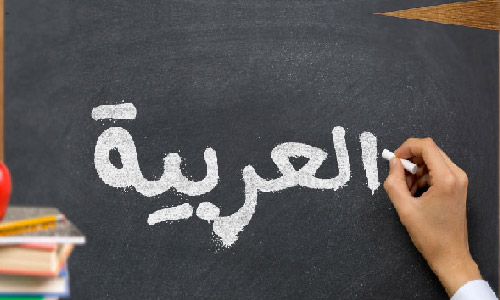The Quran stands as the central religious text of Islam, revered by over 1.8 billion Muslims worldwide as the direct word of Allah revealed to Prophet Muhammad (peace be upon him). For those beginning their journey with this sacred text, one of the most practical questions that often arises is: “How many pages are in the Quran?”
While this might seem like a straightforward question, the answer actually varies depending on the edition, format, and language of the Quran being referenced. Understanding the structure of the Quran goes far beyond just counting pages—it involves appreciating the intricate organization of chapters, verses, and divisions that have been carefully preserved for over 1,400 years.
In this comprehensive guide, readers will discover not only the typical page count of different Quran editions but also gain insight into the remarkable structure that makes this holy book so unique. From the number of chapters and verses to the practical divisions used for daily reading, this exploration will provide everything needed to understand the Quran’s physical and spiritual organization.
The Short Answer: Pages in the Quran
Standard Mushaf (Arabic Text)
When people ask about the number of pages in the Quran, they’re typically referring to the standard Arabic text known as a Mushaf. The most widely recognized version is the Madani Mushaf, which contains exactly 604 pages. This edition has become the global standard and is used in mosques, Islamic schools, and homes around the world.
The Madani Mushaf gets its name from being published in Madinah, Saudi Arabia, under the supervision of the King Fahd Complex for the Printing of the Holy Quran. This particular formatting has been carefully designed to maintain consistency across different printings, making it easier for Muslims worldwide to reference specific locations in the text during prayers, study, and discussion.
The 604-page count has become so standardized that many Islamic scholars and teachers refer to specific pages when giving instructions or references, knowing that most people will be using this same format.
Translation Variations
The page count changes significantly when dealing with translated versions of the Quran. English translations typically range from 300 to 500 pages, depending on several factors including the translation method, font size, and page layout chosen by the publisher.
Some popular English translations and their approximate page counts include various interpretations that cater to different reading levels and scholarly approaches. The variation occurs because Arabic is a highly compact language, and English translations often require more words to convey the same meaning, leading to longer texts.
Bilingual editions, which present both the original Arabic text alongside English translation, can extend to 800 to 1,200 pages or more. These editions are particularly valuable for those learning Arabic or wanting to compare the translation with the original text, but they naturally require more space due to the dual-language format.
Digital vs. Physical Formats
In today’s digital age, many people access the Quran through apps, websites, and PDF versions. Digital formats have transformed the concept of “pages” entirely, as users can adjust font sizes, line spacing, and reading layouts according to their preferences.
Popular Quran apps often divide the text into the traditional 604-page format for reference purposes, even though users might be reading on screens of various sizes. This digital flexibility allows for customized reading experiences while maintaining the traditional page numbering system for scholarly and communal reference.
Understanding Quran Structure: Beyond Just Pages
Surahs (Chapters)
The Quran is divided into 114 chapters, known as Surahs in Arabic. Each Surah varies significantly in length, creating a unique structure that reflects the diverse nature of the revelations received by Prophet Muhammad over a 23-year period.
The longest Surah is Al-Baqarah (The Cow), which contains 286 verses and covers a wide range of topics including stories of previous prophets, legal guidance, and spiritual teachings. In contrast, the shortest Surah is Al-Kawthar (The Abundance), which contains only 3 verses but carries profound spiritual significance.
The Surahs are traditionally categorized as either Meccan or Madinan, depending on where they were revealed. Meccan Surahs, revealed during the early period of Islam, tend to focus on fundamental beliefs and spiritual awakening. Madinan Surahs, revealed after the Muslim community moved to Madinah, often address community building, legal matters, and social guidance.
This organization reflects the chronological development of the Islamic community and provides readers with insights into how the religion evolved to address the changing needs of its followers.
Ayahs (Verses)
The Quran contains 6,236 verses, known as Ayahs in Arabic, though this count can vary slightly depending on the counting method used by different scholars. Some counts range from 6,204 to 6,236 verses, and these variations exist due to different scholarly traditions and methods of verse division.
The differences in counting don’t affect the actual content of the Quran—every word remains identical across all authentic versions. Instead, these variations reflect different approaches to determining where one verse ends and another begins, particularly in cases where the Arabic text flows continuously without obvious breaks.
Each Ayah serves as a complete thought or concept, though many are interconnected with surrounding verses to form larger themes and teachings. The numbering system helps readers navigate the text and provides a universal reference system for citing specific passages.
Juz/Para Division
For practical reading purposes, the Quran is divided into 30 sections called Juz (also known as Para in some regions). This division was created to facilitate regular reading, particularly during the month of Ramadan when many Muslims aim to complete the entire Quran by reading one Juz per day.
Each Juz contains approximately the same amount of text, making it manageable for daily reading while ensuring that readers progress through the entire Quran at a steady pace. This division cuts across Surah boundaries, meaning that a single Juz might contain parts of multiple chapters, or a long Surah might span several Juz.
The 30-day reading cycle has become deeply integrated into Islamic worship practices, with many mosques organizing their Ramadan prayers around the completion of one Juz each night. This systematic approach helps maintain consistency in community worship while making the full Quran accessible to readers of all levels.
Word and Letter Count
Islamic scholars have meticulously counted every element of the Quran, determining that it contains approximately 77,430 words. This precise count reflects the extraordinary care taken in preserving the text throughout history, with every word verified and maintained across generations.
The letter count and word analysis hold special significance in Islamic numerology and linguistic studies. Scholars have noted patterns and mathematical relationships within the text that continue to fascinate researchers and believers alike.
This precision in preservation demonstrates the remarkable attention to detail that has characterized the transmission of the Quran since its revelation, ensuring that the text available today is identical to what was revealed over 1,400 years ago.
Sajda (Prostration) Verses
What are Sajda Ayahs
The Quran contains 14 to 15 places where Muslims perform Sajda (prostration) during recitation, depending on which school of Islamic thought is followed. These special verses, known as Ayat as-Sajda, are marked in most Quran editions with special symbols to alert readers.
When encountering these verses during recitation, Muslims traditionally pause to perform a brief prostration as an act of worship and humility before Allah. This practice connects the physical act of reading with spiritual devotion, creating moments of heightened reverence during Quran recitation.
The Sajda verses appear in various Surahs throughout the Quran and often occur during passages that describe Allah’s majesty, the creation of the universe, or calls to worship. These moments serve as natural breaks in recitation that encourage reflection and spiritual connection.
List of Sajda Locations
The Sajda verses are found in specific Surahs including Al-A’raf, Ar-Ra’d, An-Nahl, Al-Isra, Maryam, Al-Hajj, Al-Furqan, An-Naml, As-Sajdah, Fussilat, An-Najm, Al-Inshiqaq, and Al-Alaq. Some schools of thought include an additional Sajda in Surah Al-Hajj, bringing the total to 15.
The slight difference in count between Sunni and Shia traditions reflects different interpretations of certain verses, though both traditions recognize the importance of these prostration points in Quran recitation.
For practical purposes, most printed Qurans clearly mark these locations with special symbols, making it easy for readers to identify when they should perform Sajda during their recitation.
Different Editions and Their Page Counts
Popular Arabic Editions
While the Madani Mushaf’s 604 pages represents the most common format, other Arabic editions exist with slight variations. Pakistani editions might contain 540 to 560 pages due to different formatting choices, while some Egyptian editions use layouts that result in different page counts.
These variations don’t affect the content—every authentic Quran contains exactly the same text. The differences arise from choices in font size, line spacing, page margins, and the style of Arabic calligraphy used in the printing process.
Regional preferences often influence which edition becomes popular in different parts of the world, though the Madani Mushaf has achieved widespread acceptance due to its careful standardization and widespread distribution.
Translation Editions
English translations vary significantly in page count based on the translator’s approach and the publisher’s formatting decisions. The Sahih International translation, known for its contemporary English, typically runs shorter than more classical translations that use older English forms.
Translations by scholars like Pickthall and Yusuf Ali, which include extensive footnotes and commentary, often result in longer books due to the additional explanatory material provided alongside the basic translation.
Bilingual editions that present Arabic text facing English translation pages naturally require more space but offer the valuable benefit of allowing readers to compare the translation with the original Arabic text.
Specialized Formats
Large print editions designed for elderly readers or those with vision difficulties can extend to 800 or more pages, prioritizing readability over compact formatting. These editions serve an important accessibility function while maintaining the complete text.
Pocket-sized versions compress the text into smaller formats, sometimes achieving the full Quran in 400 pages or fewer through tiny fonts and minimal margins. While portable, these editions can be challenging to read for extended periods.
Study editions with extensive commentary, cross-references, and explanatory notes can reach 1,500 pages or more, transforming the Quran into a comprehensive educational resource rather than just a text for reading and recitation.
Why Page Count Varies
Physical Factors
Several physical factors influence the final page count of any Quran edition. Paper size plays a crucial role—editions printed on larger paper formats like A4 can fit more text per page compared to smaller book formats, resulting in fewer total pages for the same content.
Font size and style choices significantly impact page count. Arabic calligraphy comes in various styles, from ornate traditional scripts that require more space to simplified modern fonts that allow for more compact text layout.
Line spacing and margin decisions also affect the final count. Some editions prioritize readability with generous spacing, while others maximize text density to create more portable books.
Content Additions
When translations are included alongside Arabic text, the page count naturally increases. Commentary and footnotes, which many publishers include to help readers understand context and meaning, can substantially expand the book’s length.
Introductory materials explaining Islamic history, the circumstances of revelation, and guidance for new readers add pages before the actual Quran text begins. Similarly, appendices with prayer guides, Islamic calendar information, and reference materials contribute to the total page count.
Index sections and cross-reference materials, while valuable for study purposes, add additional pages that don’t contain Quran text but support the reader’s understanding and navigation of the content.
Practical Information for Readers
Reading Timeline
Many people wonder how long it takes to read the entire Quran. At a comfortable reading pace, completing the full text typically requires 15 to 20 hours of reading time. However, most Muslims prefer to spread this reading over time rather than attempting to read it all at once.
The 30-Juz division makes it practical to complete the Quran in a month by reading one section daily, with each Juz taking approximately 30 to 45 minutes to read at a moderate pace. This schedule is particularly popular during Ramadan when many Muslims aim to complete the full Quran during the holy month.
For those preferring a longer-term approach, reading just a few pages daily allows for completion over several months while providing time for reflection and contemplation of the text’s meaning.
Digital Options
Modern technology has made the Quran more accessible than ever through smartphone apps, tablet applications, and computer programs. Popular apps offer features like audio recitation, multiple translations, search capabilities, and progress tracking.
Many digital versions maintain the traditional 604-page numbering system while allowing users to customize their reading experience through adjustable fonts, background colors, and reading modes designed to reduce eye strain.
Audio features paired with text display help users learn proper pronunciation while following along with the written text, making these digital tools valuable for both new learners and experienced readers.
Choosing the Right Edition
Selecting the appropriate Quran edition depends on individual needs and reading goals. Those new to the Quran might prefer editions with translations and explanatory notes, while fluent Arabic readers might choose traditional Arabic-only versions.
For daily reading and prayer, a standard 604-page Madani Mushaf offers the advantage of universal page references that work in study groups and religious classes. Students might benefit from editions with extensive commentary and cross-references.
Travelers often prefer compact editions that maintain readability while reducing weight and space requirements, while those with vision challenges should prioritize large-print editions over compact formats.
Conclusion
The question “How many pages are in the Quran?” typically receives the answer of 604 pages when referring to the standard Madani Mushaf used worldwide. However, as this guide has demonstrated, page count varies significantly based on format, language, and edition choices.
More importantly than the specific page count, understanding the Quran’s structure—its 114 Surahs, 6,236 Ayahs, 30 Juz divisions, and approximately 77,430 words—provides insight into the remarkable organization of this sacred text. Whether someone is reading a 300-page English translation or a 1,200-page bilingual edition, they’re engaging with the same carefully preserved revelation that has guided Muslims for over fourteen centuries.
Rather than focusing solely on the number of pages, readers are encouraged to explore the rich content within those pages. The Quran’s true value lies not in its physical dimensions but in its spiritual guidance, profound teachings, and timeless wisdom.
For those ready to begin their reading journey, starting with a Juz-based reading plan offers a manageable approach that connects daily reading with a tradition practiced by millions of Muslims worldwide. Whether through a physical book or digital app, the important step is simply to begin engaging with this remarkable text that continues to inspire and guide people across the globe.








